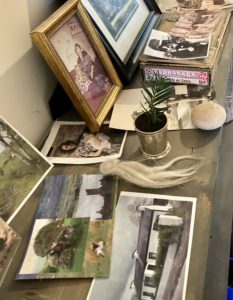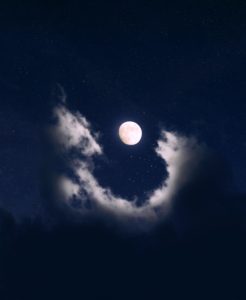March 25, 2024
Post Awakening Oscillations and Sacred Reconfiguration
Here is another clip from a Trillium Awakening sitting in 2021. I hope you enjoy it and that it helps you navigate post awakening life.
February 19, 2024
Sacred Unraveling - Moving Beyond the Need for Control
The presentation was made during a Trillium Awakening sitting in 2021. This 10-minute clip is extracted from a longer presentation.
November 25, 2023
Connecting to the Plant Kingdom Through Botanical Inks
My affection and connection to the Plant Kingdom grew by making botanical inks. I invite you to watch this video to learn more
I learned about making botanical inks through Julie Gibbon's Mandala Magic School. Discover more about all of Julie's offerings via this link.
June 27. 2023
Sensing non-separateness via our connection to the web of life, nature, and the elements
 Use this link to listen to a guided meditation I offered a couple of years ago. The recording is 33 minutes long and includes periods of guidance and silence allowing you to deepen into your connection of non-separateness.
Use this link to listen to a guided meditation I offered a couple of years ago. The recording is 33 minutes long and includes periods of guidance and silence allowing you to deepen into your connection of non-separateness.
Empathy and Compassion for Self and Others
April, 2023
One of the "practices" of the Trillium Awakening path consists of gathering in small groups for mutual honoring and sharing. These gatherings are dedicated to seeing, hearing, and honoring others exactly as they are. We listen to the story of others with curiosity, interest, and compassion. We hold the truth that each will unfold in awakening exactly as they are, a unique expression of underlying pure consciousness arising as each person and indeed every manifestation of the source of all. There is no need to try fixing, changing, advising, or improving the other. Over time, the practice of compassionately holding others simultaneously matures our capacity to hold ourselves without judgment or inner criticism.
Trillium Awakening offers group "sittings" facilitated by Trillium teachers and Mutuality Cafes that are peer-based. Participating in these events helps us mature in our ways of being with others, leading to a natural maturation of self-compassion.
This 4 and a half minute video, produced by the Cleaveland Clinic, reminds us that we can't always know what is happening inside another but can meet the other with empathy and compassion.
November 23, 2022
Celtic knots and their underlying patterns
Inspired by the transformational soul work of Julie Gibbons, https://www.juliegibbons.com/ I became fascinated with Celtic Knots and more essentially with the underlying grids and diagrams that support these complex knots.
As my life's journey takes me into further expressions of wholeness and diversity I find that I develop more meaningful ways to support people in blossoming in their unique awakened path. As I support others, I appreciate that we all have an inner brilliance that leads us to the sense of home we yearn to find.
May inquiry take you into the underlying patterns that influence your behavior. May you find freedom from untangling the patterns that do not serve you.
Samhain
November 1, 2022
In the eightfold Celtic Calendar, Samhain, marks the time halfway between the Fall equinox and Winter. Astronomically it falls close to November 1st but the date shifts somewhat from year to year.
Samhain honors the end of the harvest and the Celts suggest it is the beginning of winter. It is a time of remembrance. It is believed that the veils between those living on earth and their deceased ancestors is very thin at Samhain and during this time it is important to honor our ancestors to receive their guidance and blessings. In addition to remembering our blood ancestors, it is a time to honor others no longer alive who have influenced our lives in significant, positive ways. We can honor specific people as well as archetypal professions without whom our lives would be less fortunate. For example, we could honor those in the building profession or farmers.
I have dedicated the top of a shelf in my home to hold mementos and photographs of my parents and grandparents. Here is a picture of that altar.
My maternal grandparents were born in rural Ireland. My paternal lineage is a mixture of ancestry including Ireland, Isle of Mann, and England. Many of these areas would have honored the eightfold Celtic Calendar.
Are the ancient traditions from your lineage?
March 28, 2022
The Night was Clear
A song that I wrote many years ago. It is my desire that you will remember your magnificence.
Perhaps this song will help.
February 12, 2022
Skeleton Woman, a Soul Retrieval myth
Often, times of stress and trauma are too much for our being to endure. Essential and tender parts that are overwhelmed seek protection by splitting off or going into hiding, into shadow. There they wait to be honored, reclaimed and re-integrated.
Let your heart bask in this story that is not meant for the mind. It brings our whole being to the mythic realms where soul retrievals make sense.
I am trained in Soul Retrieval. Let me know if you want to learn more.
May 29, 2021
Consciousness
Consciousness is one of the three primary elements of trillium Awakening. In this short video, several Trillium teachers speak about it.
November 1, 2022
Samhain - a Celtic Festival
The Celtic Festival, Samhain, denotes the end of the harvest time and marks the beginning of Winter. It is celebrated halfway between Fall and Winter, a date that astronoically shifts sligtly each year and falls around November 1st.
March 12, 2021
Guided meditation - Connecting to the Web of Life
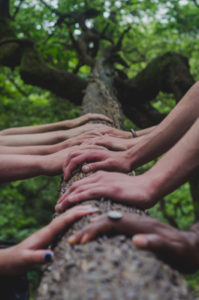 On our path of awakening, we endeavor to free ourselves from the prison of non-separateness. By widening our circle of compassion to embrace all of life, we can begin to sense our non-separateness from all living creatures – not only those few that we have become close to in our lifetime but to all of the natural world. This larger sense of connection is a reality that’s been held by indigenous people since the beginning of time. Join me (Cielle Backstrom) in this meditation as I lead you to an easy doorway to the sense of non-separateness.
On our path of awakening, we endeavor to free ourselves from the prison of non-separateness. By widening our circle of compassion to embrace all of life, we can begin to sense our non-separateness from all living creatures – not only those few that we have become close to in our lifetime but to all of the natural world. This larger sense of connection is a reality that’s been held by indigenous people since the beginning of time. Join me (Cielle Backstrom) in this meditation as I lead you to an easy doorway to the sense of non-separateness.
This link will take you to the audio player to follow the meditation.
Connection with the Web of Life Meditation with Cielle Backstrom
Jan 13, 2021
Trillium Awakening Inquiry deck
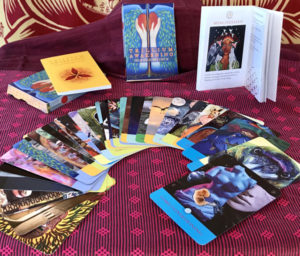 The Trillium Inquiry deck was over two years in the making. It features original art from 11 members of our extended Trillium Community. Fairfield teachers, Denise Gallagher and I have artwork included in the deck.
The Trillium Inquiry deck was over two years in the making. It features original art from 11 members of our extended Trillium Community. Fairfield teachers, Denise Gallagher and I have artwork included in the deck.
Each image has been transmitted from the depths of the artist’s soul and is meant to inspire remembrance of who you are. You will find different cards speak to different aspects of your nature. The cards encourage you to reflect on the images and allow them to evoke insight and creativity.
And there is a booklet too. I was part of a team with Fax Gilbert, Sandra Glickman, and Rod Taylor. We met more than 20 times to help collaborate on the words in the booklet. We worked with the team that brought this project to fruition. The booklet gives you a word or phrase tied to each image that is part of the Trillium teaching. That expression is defined and then there are a series of inquiry questions to consider.
I enjoy choosing a card for the day and then looking at the self-inquiry questions associated with that card to see where I might find insight or an angle to pursue for the day.
You can order a deck via this link. https://www.trilliumawakening.org/self-inquiry-deck/
Dec 1, 2020
The Unraveling of Fixing and Seeking Strategies
Unraveling of fixing and seeking strategies is one of the first phases we are likely to encounter on our path of whole being awakening. This includes the realization that your previous strategies to either 1) fix, control, or figure out or 2) escape or transcend - pull away from your fundamental feeling of “I’m not okay” are no longer effective and that we need to let go of them.
We discover that moving forward with the needed letting go can bring us to a passage that can feel disorienting, unstable, very unraveled. During this time of unraveling, we often have to trust the teaching.
In this short video clip, I speak about the phase of unraveling that leads to awakening.
August 1, 2020
Guided meditation, Embodied Presence
Trillium Awakening teachers offer guided meditations several times a week. I was the teacher one Sunday in July 2020.
As we awaken, three major energy centers start to come alive. The head, heart, and belly, are vast inner spaces, and paying more attention to them can help us feel like we are arriving more fully in ourselves. Often, people have their Whole Being Realization primarily in one of these centers.
This meditation includes inviting love and compassion from our heart center to expand and embrace the world that surrounds us.
It is intended to be a resource that you can return to again and again on this path of awakening.
May 12, 2020
Waltz for a Reluctant Man
Waltz for a Reluctant Man
Hold her close
The music has just begun
Glide together
Make your hearts beat as one
Breathe her in deeply
This could be your last chance
Dance and
Dance and
Dance
Dance as if
There's no one else on the floor
Do her eyes
Tell you that she's wanting more
Trapped inside
A time warp of pure romance
Dance and
Dance and
Dance
Your leads are gentle
But strong and clear
Intoxication
Is very near
Her willingness
Is without a fear
This moment is dear.
Pull her closer
She starts to tremble now
Circling Magic
Catches you both somehow
Spinning you
Into an endless trance
Dance and
Dance and
Dance
Your leads are gentle
But strong and clear
Intoxication
Is very near
Her willingness
Is without a fear
Dance and
Dance and
Dance
May We Hold You
October 31, 2019
During Trillium Awakening sittings it is common for each participant to share with the group. Each person is invited to speak about anything that is currently “up” for them. This might be something that they are struggling with, personally or an issue that they would like to bring into greater awareness.
After each person shares the teacher leading the sitting will typically say, "May we hold you?" In this recording I share some tips about and the value of this silent, energetic holding.
Greenlighting and our Shadow
September 14, 2019
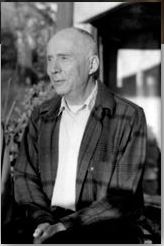 The late Robert Johnson, author, and Jungian analyst speaks of our shadow and why it is important to embrace it. It reminds me of the Trillium teaching that we greenlight all that we are in order to allow an authentic dropping into our humanness, to not pull away from it. Through our Whole Being realization we recognized that we are paradoxicaly both the limits of our humaness while simultaneously unlimited, eternal, divine nature.
The late Robert Johnson, author, and Jungian analyst speaks of our shadow and why it is important to embrace it. It reminds me of the Trillium teaching that we greenlight all that we are in order to allow an authentic dropping into our humanness, to not pull away from it. Through our Whole Being realization we recognized that we are paradoxicaly both the limits of our humaness while simultaneously unlimited, eternal, divine nature.
Johnson writes:
"To own one’s own shadow is to reach a holy place—an inner center—not attainable in any other way. To fail this is to fail one’s own sainthood and to miss the purpose of life. . . .
To refuse the dark side of one’s nature is to store up or accumulate the darkness; this is later expressed as [depression], psychosomatic illness, or unconsciously inspired accidents."
Three of Johnspn's best known books are
- He: Understanding Masculine Psychology (1974)
- She: Understanding Feminine Psychology (1976)
- We: Understanding the Psychology of Romantic Love (1983)
The Power of Pause and Whole Being Realization
April 20, 2019
Cultivating a practice of pausing ... even simple pauses of a few seconds ... can allow our attention to rest in the present moment and this can foster our awakening.
Wisdom of the Body
March 30, 2019
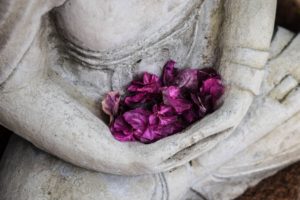 I love Focusing and use it in my daily life. I have written about Focusing elsewhere on this website.
I love Focusing and use it in my daily life. I have written about Focusing elsewhere on this website.
In the words of Ann Weiser Cornell, Inner Relationship Focusing is primarily “For Deep Emotional Healing and Life Change.”
But where can such healing and change be generated from? The answer is the body.
The body can give us the shifts we seek because it holds the memories and the keys to moving forward; its impressions are held without interpretation or extraneous thought material.
Many people have lost touch with the signals of their body and become too familiarized with the analysis in their heads. Inner Relationship Focusing gives us a journey back to the truths our bodies hold.
The conventional ways for working with emotional material have often involved looking for direction and answers outside ourselves, such as in systems of beliefs, doctrines, advisors, rules, etc.
Or, we may have tried to use our minds to understand a problem, hoping that understanding would be enough to release the stress and let us move on.
But, to get the deep emotional healing and life change that Focusing offers, we put our attention on three things: the body, the present moment, and maintaining an attitude of non-judgment, curiosity, and compassion.
Attention on the body
Focusing is not a time when we try to fix something or analyze it. During Focusing, we simply allow our concern to be conscious while we put our attention on the body. We start by getting “into” our body by scanning the throat, heart, and belly. Then, in our entire session, we stay inward, "listening", sensing in the body. What am I feeling? What is it like?
The present moment
The time when this issue first arose for you is not important. In fact, you may have experienced trauma as a baby, before memories could form as as clearly as they did later. But, by listening to what arises from your body, you are attuning to how the issue is living in you now.
The present moment is where the juice, the answers, and the energy for change lie. What is needed to bring about change is to sense what is it like right here, right now.
Honor the thinking mind, but learn how to step out of it and experience directly. If we are lost in the story, we can find our self when we come into the body. We choose to investigate consciously as we allow present moment experience to come into focus. “I'm sensing something”...”I'm finding the best way to describe it.”
Gendlin, Focusing Founder, said that this attention on our body in the present allows us to have an “in the moment” experience of that which we wish to complete. We must sink into the present to have a gateway to completion and change. May sound monumental, but we need only sense what it is like right here, right now.
Non-judgment, interested curiosity, and compassion
All of these have to do with the attitude you offer to your body and any sensations it wishes to share with you. Non-judgment means you accept whatever is arising without entertaining a reaction to it. You accept all as valid and valuable. Even if what is arising seems totally unrelated.
Gendlin spoke of the vast web of the body and how it extends beyond our physical boundaries. Whatever arises is connected somehow, but in Focusing, we are not trying to figure out how. The body "finds" out. We welcome whatever is going on in the vastness of the body.
During IRF, you also bring to your body interested curiosity. Ann Weiser Cornell tells us that some of the body’s feelings may be like those of a “shy animal”—they may have difficulty trusting. Expressing them may have been very difficult in the past, even impossible. The attitude of interested curiosity tells the body that you not only welcome what arises, but that you are willing to go as slowly as it needs. You plan to be patient and just “keep it company.”
We also offer compassion to our body and whatever arises. Our compassion helps the body relax and trust. Most of us remember confiding in someone because the person was empathetic. The body is a storehouse of truths, but many of its truths have not been welcome. We honor any reluctance the body may feel, and offer it acceptance, compassion, and kindness.
You may think, “But I really do have judgment toward myself because it’s taken me so long to let go of this issue.” If we notice this then we turn to that judgemental part with compassion. We keep it company.
Shifts begin to happen
The pathway home, especially when we are caught in suffering, is to come back to our bodies. We intentionally pause to feel the situation without judgment... in our bodies...sensing for how it is showing up in the body right now.
When our body allows us to deepen our connection to what is arising in the moment, shifts begin to happen. We can’t force them, and they aren’t necessarily accompanied by an "aha" moment. They may start quietly, even as barely perceptible whispers.
Gendlin reminds us that for forward steps to happen all that is needed is "some kind of unintrusive contact or company. If you will go there with your awareness and stay there or return there, that is all it needs; it will do all the rest for you."
A shift may be felt simply as energy stirring, or as spaciousness, an expelling of breath. Or you might have a sense that something that was frozen starts to melt into wholeness. In any case, these shifts will give you more forward energy in your life. They will “unstuck” you.
So, in each Focusing session, we continue with interested curiosity to invite anything more that wants to arise ... to unfold.... to be known.
And, we thank our body and our body's process.
Service
November 5, 2018
 Many of us want to find a way to improve not just the quality of our own lives but to dedicate at least a part of our energy to some form for service that will make a difference to others. But how do we do this? What if we don't know where to start?
Many of us want to find a way to improve not just the quality of our own lives but to dedicate at least a part of our energy to some form for service that will make a difference to others. But how do we do this? What if we don't know where to start?
There is a question that many leaders ask when searching their souls for the best way to make a difference in the world. The question is simple and can open the door to a unique form of service that is aligned with each of us. That question is,
"What breaks your heart?"
Contemplate that question. Find your answer. Act. Don't be concerned if your action feels big or small. Each and every step we make will lead to the next step. Trust. Keep following your heart in this service.
My friend and colleage, Margit Bantowsky, offers suport for those wanting to explore, individually or in groups, moving into or expanding in service. Find her offerings at http://www.awakenedactivism.net
The Forever Connection
October 14, 2018
 During one of my online sittings I spoke about the fundamental field of consciousness that underlies and supports all of creation. Shortly before that sitting I came across the expression, "The Forever Connection." I loved it. It opened up new doorways for me to relate to the field of non-change, the web that forever connects us.
During one of my online sittings I spoke about the fundamental field of consciousness that underlies and supports all of creation. Shortly before that sitting I came across the expression, "The Forever Connection." I loved it. It opened up new doorways for me to relate to the field of non-change, the web that forever connects us.
Join me by listening to the audio recording made during this sitting. In the recording I first speak about the concept of consciousness and non-separateness, two fundamental aspects of awakening. I then lead an exercise. Following the exercise I read a Hopi poem. The audio is 28 minutes. Grab a cup of tea, relax into your chair and join me.
Here is the link to the recording. The Forever Connection
Onliness
July 19, 2018
The word "onliness" is one we use in Trillium Awakening. It stumped me for quite a while. I want to make sure that you aren't as mystified as I was. Nearly 3 years ago I wrote about Onliness and included these words
"As we become more and more awake to our true nature, we become increasingly aware that while we are each distinct and unique, we are in essence the eternal and silent unified field of consciousness. As such we are not actually separate. We increasingly feel on a deep level of realization that all of us are comprised of the spaciousness, the unmanifest field of Being. Although consciousness arises as distinct manifestations, all is essential consciousness. All is made up of "only" one thing .... "Onlyness"
Learn more from this video, recorded live during an online sitting. To assist in the direct experience of consciousness, the field that underlies and infuses all manifest creation, I also leads a guided meditation.
Cielle, The Sky
April 26, 2018
In 2013, Cielle Backstrom, Daniel Sperry and Tara Harper collaborated to create this video . Daniel took my name, which translates to "sky" and wrote a poem dedicated to your soul.
Cielle, The Sky
Let's say, you are just entering the atmosphere now,
you are traveling from the sun,
you have an idea, a purpose, to light up the earth,
to warm the earth, in a certain way.
We are just imagining things,
Friend, you may not be traveling from the Sun,
but consider for a moment, what is holding you?
Cielle, the sky, is holding you as you travel,
seeing you as you find the earth,
helping you to know yourself as the soul's seed that you are.
Some see you as blue, filling the day,
as you arc from the heavens
on down to the place where you will grow and
bring growth and become all you were meant to be.
Some may not see you at all.
Cielle knows you as the sky knows you,
a welcome traveler, landing here,
holding you as you land
and helping you to feel how
the beaming yellow of sunrise,
the electric blue of the day,
and the blood red of sunset
are just a few of the gifts that you bring with your body,
this body of the soul that you are.
Music and Poetry - Daniel Sperry CelloManSings.com
Video Editing - Tara Harper TaraStarDancer.com
Collage - Cielle Backstrom
Consciousness Summit
March 20, 2018
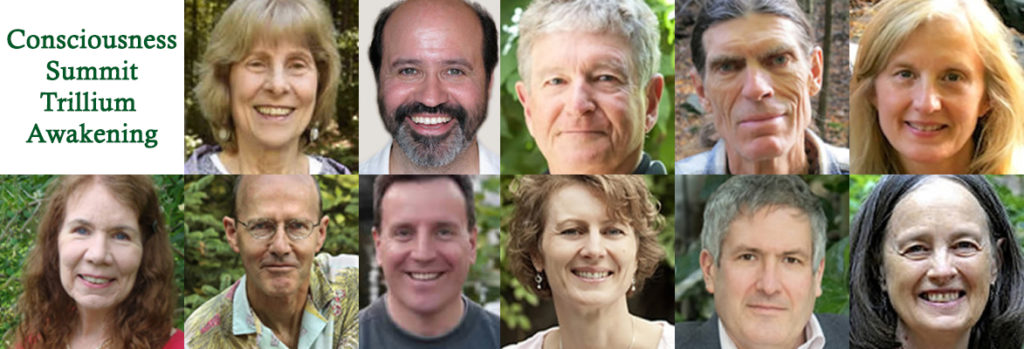 In December I had an idea to produce a series of recordings on the topic of consciousness. My plan was to model this series on online "summits" that are growing in popularity. The summits I have enjoyed are common in that a single theme is explored by mulitple experts. Each contributer is recorded individually or as part of a small panel. I was interviewed as a panelist in The We Space Summit.
In December I had an idea to produce a series of recordings on the topic of consciousness. My plan was to model this series on online "summits" that are growing in popularity. The summits I have enjoyed are common in that a single theme is explored by mulitple experts. Each contributer is recorded individually or as part of a small panel. I was interviewed as a panelist in The We Space Summit.
Having been part of a summit, I decided to create a mini-summit on consciousess. It is now avalable for you to view from the comfort of your home at any time.
You will find 11 videos focused on exploring and clarifying consciousness at.
http://www.trilliumawakening.
These recordings include valuable presentations and many of them will lead you in exercises to help you clarify and deepen in understanding consciousness and guide you to experience it directly. This resource will help you wherever on your are on your path of awakening. It was created for those new to embodied awakening as well as seasoned practitioners.
Because I was the interviewer, I was the direct recipient of these powerful teachings first hand. I assure you that they are awesome and practical. Some of you are already awake and might wonder about the value of watching this series. Deepening in consciousness, even after awakening, is of emmense value as is cultivating a growing understanding of this essemtial ground of being.
Embodiment
February 13, 2018
The three key aspects of Trillium Awakening are Consciousness, Embodiment and Relatedness. I love delving into the deeper, living meaning of each of these words and their importance in embodied awakening. This recording was made during a live online sitting. The focus of this presentation was embodiment. In addition to speaking about embodiment, I led an exercise to invite our awareness to attune to the body.
Please note: before this presentation, each participant at the sitting spoke briefly. I was given permission from each person whose name I mentioned to include their name in the recording.
Sitting with Loss and Disappointment
January 9, 2018
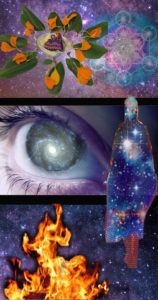 Ten braved the sub zero temperatures that descended on the mid-western US the morning of January 1st. They drove and even biked the cold and snowy streets of Fairfield, Iowa in order to help create a prayer bundle, called a Despacho, with my husband, Jeffrey, and me. More than 50 emailed their intentions to me.
Ten braved the sub zero temperatures that descended on the mid-western US the morning of January 1st. They drove and even biked the cold and snowy streets of Fairfield, Iowa in order to help create a prayer bundle, called a Despacho, with my husband, Jeffrey, and me. More than 50 emailed their intentions to me.
The Despacho involves the creation of a ceremonial prayer bundle made of grains, seeds, candies, flowers and small symbols. It is the traditional Andean ceremony which creates or strengthens our bond with the divine. It awakens and empowers, for the individual and the collective, our right relation with the forces of Nature. As the ceremony progressed, everyone present formed “k’intus”, little groups of three leaves, and, with their own breath, gently blew their prayers and offerings into the leaves. These were then added to the ceremonial bundle.
One touching symbol that is added to most Despachos is meant to represent a dream, a plan, or undertaking that started off with great promise but didn't grow to fulfillment. We have all had such events in our life. And sometimes they have represented a huge loss. Adding such an item to the Despacho will not bring that dream back to life -- will not bring it to completion -- but it can help us complete the stages of mourning that might not have been completed when that event, dream, or plan was aborted.
You might consider pausing for a moment to consider any dreams, goals, plans you have had that didn't come to fruition. Then check if the impact that had on you would like you to pay attention to it. Sometimes we brush disappointments away too quickly. Sit with that disappointment like you would sit with a good friend. Listen to its sadness, anger, confusion, guilt or blame. Sit with compassion, not to give advice, just to say, "I hear you." Allow that mourning to move toward completion.
May 2018 be a good year for you. To quote a friend, "May 2018 bring more than you even dare hope for!"
Winter Solstice
December 21, 2017
I n the time between Winter Solstice and the New Year are you able to welcome and embrace the feelings that arise in you when you think about darkness? In the awakening life we push away nothing. We embrace all.
n the time between Winter Solstice and the New Year are you able to welcome and embrace the feelings that arise in you when you think about darkness? In the awakening life we push away nothing. We embrace all.
"Hello darkness my old friend. I've come to talk with you again." Simon and Garfunkel.
What you can do
I invite you to light a candle on December 21, Winter Solstice. You can pause for a moment with the intent to release into the flame the heavy energy that you do not want to bring into the new year. You can also invite the flame to light the way to new purpose and meaning in your life.
On winter solstice we gather to celebrate the darkest day of the year while at the same time we rejoice knowing that the longer days of sun are returning.
William John Fitzgerald writes in his poem, Black Can Be Beautiful
O God, black can be beautiful!
Let us be aware of black blessings:
Blessed be the black night that nurtures dreams.
Blessed be the black hole out of which creation sprang.
Blessed be the black cave of imagination that births creativity.
Blessed be dark wombs that cradle us.
Thirteen Candles
December 10, 2017
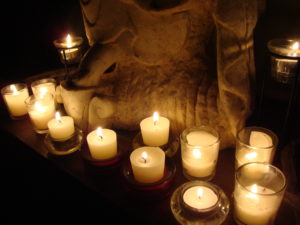 One night near the end of November, after the sun set and the night sky sparkled with two of my favorite constellations, Pleiades and Orion, I lit 13 candles and placed them at the feet of my Quan Yin statue.
One night near the end of November, after the sun set and the night sky sparkled with two of my favorite constellations, Pleiades and Orion, I lit 13 candles and placed them at the feet of my Quan Yin statue.
There are 13 full moons in each year and I associate the waxing and waning moon with feminine energy. I connected to a feminine space of compassion and honoring. There was incense and the ringing of angelic chimes.
I slowly read the names of over 100 people who I have supported or who have supported me on the path of embodied awakening. I spend time reflecting on each person, remembering our connection. I asked for ease and fullness to shower upon you -- like a warm and gentle rain.
A rich heartfelt hour passed in this way.
Life is a miracle. You are a miracle. Thank you
Conversations in Consciousness
Oct 19, 2017
A lively conversation with Chris Morris from www.openingspaces.com
Chris and I talk about ....
Unitive experiences and Spiritual emergence
Subtle energy and subtle realms
Present moment awareness
Cosmic and earth energies
Planetary shifts
oneness .... consciousness
Emotional storms
empowerment
Chris and I had so much fun in our rapid fire exchange of principles and ideas and finding real world examples of how these concepts live in our lives. I think you will enjoy our conversation.
Embrace of the Sun and the Moon
August 21, 2017
 In Fairfield, Iowa, on August 21, the moon would eclipse 96% of the sun. But I wanted to see a total eclipse. So did my husband, Jeffrey. I’d read that Missouri would have the longest exposure of totality anywhere. And the path of totality was only 3 hours from where we lived. So Jeffrey and I drove to Columbia Missouri where we found a lovely state park. We drove into the park eager to watch the eclipse. The park rangers carefully directed cars to different areas which could accommodate large numbers of cars and still not feel too crowded. It was all very thoughtfully organized. We shared our parking area with all sorts of people. Amish families with barefoot children, techie guys happy to let people view through their powerful scopes, people viewing the eclipse through welding masks, photographers hoping for the perfect shot, along with many people like me and Jeffrey. One man mentioned that he had left home at 2 am to drive to this location. Hundreds of people had gathered there. The feeling was celebratory and respectful. There was a sense of unification of purpose.
In Fairfield, Iowa, on August 21, the moon would eclipse 96% of the sun. But I wanted to see a total eclipse. So did my husband, Jeffrey. I’d read that Missouri would have the longest exposure of totality anywhere. And the path of totality was only 3 hours from where we lived. So Jeffrey and I drove to Columbia Missouri where we found a lovely state park. We drove into the park eager to watch the eclipse. The park rangers carefully directed cars to different areas which could accommodate large numbers of cars and still not feel too crowded. It was all very thoughtfully organized. We shared our parking area with all sorts of people. Amish families with barefoot children, techie guys happy to let people view through their powerful scopes, people viewing the eclipse through welding masks, photographers hoping for the perfect shot, along with many people like me and Jeffrey. One man mentioned that he had left home at 2 am to drive to this location. Hundreds of people had gathered there. The feeling was celebratory and respectful. There was a sense of unification of purpose.
During the last hour of our drive the sky clouded over but when we reached the park, the cloud cover thinned enough for us to put on our special glasses and watch the moon slowly move across the sun.
And then just a minute or two before the total eclipse, big, thick, black clouds covered the sky. Did the moon and sun want privacy during their intimate embrace?
We had to content ourselves with observing the changes all around us. The day darkened, and the temperature dropped. The horizon glowed pink and orange -- just like we read it would. And the cicadas got crazy loud as the sky darkened. We kept peaking at our watches because we knew we had only seconds left of the total eclipse.
Would the dark clouds budge?
Then, magically, the clouds slithered away from the sun/moon union. We saw the corona and then the brief dazzling diamond ring as the moon moved on. People standing or sitting in their parked cars whooped and hollered for that glimpse of totality. I felt huge thanks for those few seconds of pure delight. The magic was real, and I felt it in my heart, body, and soul.
My son, Collin Miller, stayed home in Chicago where he saw the moon eclipse 95% of the sun. During the event, Collin wrote poetic reflections on the metaphor of shadow, alluding to those parts we keep hidden (we think), while we unconsciously project them onto people and circumstances around us. Here is what he wrote:
Sitting here
Under the encroaching shadow of the moon
Feeling small
Feeling connected to all the other, equally small persons in the shade
The moon did not ask or warn
The moon did not bind our fates
We came that way, its shadow only makes more clear what cannot be seen in the light
Yes, we come to each moment with shadow material, personal and transpersonal. The Temple of the Way of Light, a retreat center near Iquitos, Peru describes our shadow in this way.
Our shadow is everything inside us that we have disowned, avoided and kept in the dark. We all turn away from pain at some stage in our life, especially during our childhoods, yet whatever we have not processed gets relegated and hidden in our shadow. Our shadow is where our life force gets trapped and is no longer available to us. It is energy that is not integrated with the rest of our being, akin to pieces of us that have become compartmentalized, pushed aside and treated as an unwanted child.
This is the shadow that my son alludes to in his poem.
When we learn to live in the present moment accepting both our humanness, with its inevitable limits, and our total divine nature, then we start to live an awakening life. A life that accepts, rather than resists, the paradox of limits and limitless. A life where our shadow is welcomed into the light in order to be integrated with the rest of our being. A life that embraces the wholeness of all the opposites, day and night, good and bad, love and fear, masculine and feminine, sun and moon.
When we are strong enough to hold opposites, we can feel the beauty of totality.
Resisting our Emotions
May 3, 2017
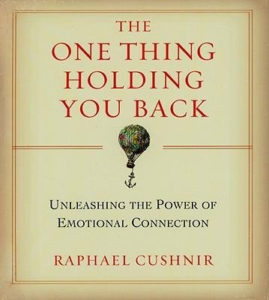 I recently listened to an audio book entitled, The One Thing Holding You Back: Unleashing the Power of Emotional Connection by Raphael Cushnir. To sum up his message, Cushnir says, resisting feeling our emotions is the one thing holding us back from moving forward in all areas of life.
I recently listened to an audio book entitled, The One Thing Holding You Back: Unleashing the Power of Emotional Connection by Raphael Cushnir. To sum up his message, Cushnir says, resisting feeling our emotions is the one thing holding us back from moving forward in all areas of life.
“All areas of life” truly includes all—such as material success, personal ease, spiritual development, and moving out of patterns of fear and constriction. This message resonates closely with that of other prominent psychotherapists and psycho-spiritual teachers, including Eugene Gendlin, John Wellwood, Tara Brach, Jack Kornfield, Bessel van der Kolk, Michael Brown, and many more.
Cushnir and many other teachers believe that our enormous potential is locked away with the emotions we've been unable to feel to completion in the past or present. To unlock this potential, we must embrace and reclaim these emotional states. We engage this process consciously and compassionately to not only complete the process, but to set our life energy in motion. When freed up, this energy naturally propels us forward in directions that serve our needs and desires.
What are resisted emotions? They are feelings that come up, but are pushed down by ourselves or by others. We learn young to feel that strong emotions need to be controlled and suppressed. For example, parents often rush to comfort, scold, or in some way truncate the distress of a child. The child is not allowed to complete an emotional cycle, and, truth is, the parents don’t know how themselves.
We were chastised when we felt and expressed strong emotions, and now associate them with rejection and criticism. Naturally, we fear them now, are ashamed of them, and use a lot of energy to hide and suppress them. We never really learned how to fully feel or investigate our emotions, much less welcome and embrace them.
Unfortunately, these incomplete processes do not lie dormant. Emotions that have not been fully felt can and often do seep into our interactions and interfere in our relationships and our inner peace. They can nag us through physical and emotional discomfort for decades! Cushnir offers many tools to help us spot when we are resisting emotions as well as how to encourage their completion.
Finding our resistance
When adults feel strong emotions related to old, subterranean pain, Cushnir points out that they may think they are experiencing the emotion but are actually experiencing the resistance to it. This is an important but sometimes subtle distinction. An example from my own life illustrates this confusion.
A few years ago, while weeding barehanded in one of my flowerbeds, I unknowingly encountered poison ivy. I was weeding near dusk, trying to finish my project, and distracted by many attacks from mosquitoes. I decided a few bites would not be a big deal, and continued weeding till dusk fell. Not knowing that my hands we're covered in poison ivy oil, I scratched the mosquito bites even while in the garden. The next morning I was surprised by the number of blisters on my hands. I thought they were all mosquito bites; I scratched more, unknowingly spreading the poison ivy oils into other areas of my body. In a couple of days, I noticed the blisters were getting bigger rather than smaller—and I realized I had poison ivy. Days too late I started to treat it, using two different soaps and three kinds of creams and lotions. My hands were now completely red, blistered, itching, and burning. I was miserable, especially at night when itching and burning kept me awake.
And it wasn't just my hands. I had spread the oils to many other areas of my body, and they too were itching and burning. I remember one night getting out of bed three times to wash with the special soap and then spread on the ointments. That process seemed to help, but only for thirty minutes. Part of me was thinking, "No one could say I am not feeling my feelings because I am fully aware that I am miserable and want this pain to stop!"
Truth was, while I was dealing with the physical pain of the rashes the best I could, I was not dealing with my angst. I became aware that I was feeling angry, frustrated, fed up, and trapped. And, on top of that, I was putting a lot of energy into stopping these feelings. Corking them up.
Putting direct attention on the resisted emotions
When I caught a whiff of the truth, I began to realize that I needed to put direct attention and time onto each of these feelings. I got out of the bath, dried myself off, put on some ointment and got back into bed—resolved to let myself feel all the way into what was coming up for me.
I started by asking myself how I felt about this itching and burning. I felt angry and trapped. I resented losing sleep. I let myself have these feelings, not making them wrong or part of the problem. I just had to give them attention and feel them with interest and compassion. Cushnir uses the analogy that we must “surf” our emotions, stay with them, not get knocked off the board or consciously jump off the board until we surf an emotion all the way to its completion.
I inquired about other feelings that might be arising and realized my primary feeling was feeling powerless. My mind drifted back to other circumstances in my life when I felt powerless. I did not focus on the events but the feelings themselves. Examples that arose included feelings of powerlessness when my dad died and when my first marriage ended. I lay there embracing these feelings, being fully present with them, and giving them time to complete. As one wave came to its completion, I’d ask, “And what other time did I feel powerless?” It was quite a life review. The waves of feelings I was surfing felt big, and at the same time each wave completed itself faster than I expected.
That night’s emotional contemplation ended with the feelings of powerlessness I had when I was just born. Prior to birth I was in familiar surroundings: warm, held in a dark watery embrace, my mother's heartbeat a constant reassuring lullaby. Now, after being exposed to hours of relentless compression during the birth process, I was mercilessly expelled from the comfort of the womb. I was thrust into light and cold and loneliness. Powerless. Completely powerless. I let myself fully feel that, employing other processes that Cushnir describes in his book. Surprisingly, that raw, Intense, vulnerable feeling of extreme powerlessness only gripped me for about fifteen or twenty minutes. And then, like all cycles of life, it settled down. I realized I could sleep. I slept until morning. The itching, burning rash no longer woke me.
In the morning, I still had the poison ivy rash. It still burned and itched. It still needed repeated treatment, special washing and application of ointments and lotions, but now I was doing these processes simply to support the physical healing. I was no longer thrashing about with angst, anger, resentment, and powerlessness. When I stopped resisting the unwanted and deeply unconscious feelings and simply felt them, I turned a corner.
Liberated energy
Letting myself consciously have these emotions liberated something in me. Instead of feeling more powerless with more hours in pain, I felt more at ease and in the present moment. My emotional body was no longer reacting to the rash, or resisting my reactions of anger, resentment, frustration, and intense powerlessness. Those feelings had stopped. I felt a cycle was completed. Of course, it took many more days for the inflammation of the rash to subside and weeks for the skin to be fully healed, but, after that relatively short time of deep feeling, I was no longer held back. Life energy began to bubble up and move forward, and I noticed greater ease, self-acceptance, and wholeness.
I had experienced the distinction between resisting feelings and feeling them fully, and I knew first-hand the liberation and forward energy of not holding myself back through resistance.
How do we know when an emotion is “complete”?
Processing emotions means different things to different people, but completing an emotion has a specific meaning in Cushnir’s teaching. In a future blog, I will address this question in detail. For now, know that, over time, you will begin to recognize the signals your body gives when you have both moved through resisting feelings and moved on to completing them. I look forward to sharing more detail about this.
Embracing the Opposites
February 3, 2017
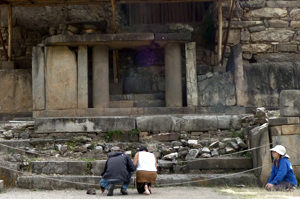 In my travels, I have had the good fortune to visit ancient, sacred sites in US, Mexico, Ireland, and Peru. The people living close to these sites have long believed these locations to be radiating powerful and transformative energy. Like the chakra system in our bodies, which includes seven powerful energy centers, Mother Earth also seems to have powerful energy centers, or vortexes, around the planet.
In my travels, I have had the good fortune to visit ancient, sacred sites in US, Mexico, Ireland, and Peru. The people living close to these sites have long believed these locations to be radiating powerful and transformative energy. Like the chakra system in our bodies, which includes seven powerful energy centers, Mother Earth also seems to have powerful energy centers, or vortexes, around the planet.
When a culture identifies a positive energy center in their midst, they often build temples or altars on the vortex where they congregate for ceremonies. Over time, with the combined effect of the natural vortex and the ceremonies, the positive energy of the area becomes even more enlivened.
One such energy center I have visited is the Chavin de Hauntar, located in the Andes of Peru. The remains of two temples still exist at Chavin. The oldest temple dates back more than 3500 years, while the “New Temple” is over 2000 years old. Both temples contain many symbols on their walls as well as portals to guide us in spiritual transformation. I will focus on the portal of the New Temple because the symbols there represented important insights for me.
Despite the ravages of time including earthquakes, landslides and pillage, significant architectural features of the New Temple can still be discerned. These include a large square plaza in front of a massive step pyramid. The plaza was the meeting place for ceremony, and everyone was allowed to gather there. Because the plaza is sunk several feet below ground level, from the perspective of the plaza, the pyramid appears even taller and grander. At the front of the plaza, a staircase leads to the temple entrance, or portal. The stairs, meticulously cut from long, rectangular stones, are placed in an interesting way: The left side of the stairs is fashioned of white granite, and the right side is made of black limestone.
For more than 3000 years, Pre-Columbian Andean cultures built elaborate portals to indicate the specialness and sanctity of what the entrance led to. For example, a stone portal or doorway that has a “double lintel” indicates entrance to a more important or sacred space than a single lintel portal. The portal to Chavin’s New Temple is the most elaborate I have seen: Massive pillars and stones that flank the entrance are in excess of 15 feet in height.
Like the staircase leading to the portal, the stones framing the left of the portal are white granite and those on the left are black limestone The megalithic stone pillars are carved with symbols and geometric patterns, including stylized images of a hawk and an eagle, which represent the feminine and masculine. Images of these two birds as well as the use of the opposing colors of black and white are typical Chavin examples of life’s duality, which was central to their philosophy and cosmology.
The significance of the black and white entry struck me. Much of the Andean cosmology stemming back through numerous empires reveres the duality of opposites. This is frequently depicted in symbols representing the masculine and feminine. But other representations of opposites exist, as in this portal with its black and white stones. The designers went to great lengths to procure, cut, and carve these massive stones. Again and again, Andean symbology reminds us that the full range of life, all of the opposites, the black and the white, must be included for our knowledge of life to be complete, whole.
Seeing such clear and massive symbols caused me to reflect that I often find myself preferring to exclude half of life. For example, how do I navigate life to try to exclude all that appears bad and favor all that appears good? Could I exclude sickness and death and have only health and eternal youth? Could I exclude sadness, anger, and angst in favor of joy, peace, and trust? Can I hold both achievement and failure, insight and insanity, perfection and scars? Here in this portal, built to withstand the entropy of time, I am reminded that the full range of life must be included, embraced, passed through. I don’t get to cherry pick the parts I want and still pretend to be whole.
And so I recognized while kneeling in front of that portal that in order to pass through to the inner temple, the holy of holies, I would have to accept, include, embrace the full range of opposites.
As I relaxed in appreciating this truth, a deeper meaning of the portal opened to me. I considered the interior of the temple, the holy of holies, to be a representation of that which is beyond the everyday world of time, space, and form. The common folk were given passage to the plaza in front of the portal. They received the blessings that could be had from that vantage point. But only those who had been initiated into the mysteries of the inner, awakened life were allowed entrance to the inner chambers of the temple, behind the elaborate, massive portal. And so it came to me that I would first need to climb the black and white staircase and pass through the black and white portal. In life’s journey, I would need to fully accept all the pairs of opposites in the material world before I would be given access to the inner chamber.
But here at the New Temple of Chavin I found another important symbol. Just past the portal, perhaps 8 feet on the other side of it, I met a solid wall. My human body could climb the stairs and pass through the portal. I could pass through all of the opposites, excluding nothing, but I could not take my human body through the massive wall. I would only be allowed to take my “light body” or spiritual body past the solid wall to the inner temple. The first phase would be total and radical embrace of all, and the second phase, which allowed access to the inner chambers, was a total surrender of all. Both were needed to enter the inner temple and meet the divine veiled by the material world.
I continue to reflect on what parts of my life I try to separate from or push away. I remind myself to accept and embrace life in its totality, the black and the white. I do this in preparation for the time when I will surrender my body at my passing and enter the mystery that is beyond all opposites. And I also do this in order to strengthen and mature my ability to open to the great mystery that is ever present as my journey of embodied awakening progresses.
The Goddess
December 31, 2016
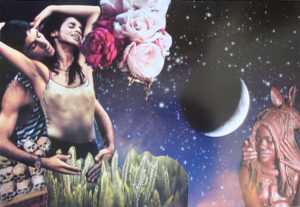 ecstasy
ecstasy
passion
her breath perfumes the roses
aliveness, wildness
and death ... matter, mother, sinks back into wholeness, darkness
again and again
the cycles of the moon mirror her ever changing display
the arms of the deep masculine protect her fertile womb
allowing her to give birth endlessly
thank you
she answers my unspoken question
with booming certainty, "who am I not?"
November 22, 2016
The Body Keeps the Score
 The Body Keeps the Score by Bessel van der Kolk, MD, is a fascinating book that explores the perhaps unwanted truth that our bodies hold the memories of stress and trauma. Van der Kolk has spent more than 50 years researching not only the physiological implications of stress and trauma, but also clinical trials substantiating practices that could help restore the body, mind, and emotions to equilibrium.
The Body Keeps the Score by Bessel van der Kolk, MD, is a fascinating book that explores the perhaps unwanted truth that our bodies hold the memories of stress and trauma. Van der Kolk has spent more than 50 years researching not only the physiological implications of stress and trauma, but also clinical trials substantiating practices that could help restore the body, mind, and emotions to equilibrium.
Van der Kolk and other psychologists found that tuning into the stress held in the body was the first step toward resolution. The process of therapy then gradually released the stress and enabled patients to return to wholistic ease. They observed that when we do not find the tools for processing the stress in our bodies, our lives become caught up in a tangle of reactive behaviors.
Many doctors and psychologists collaborating with or working parallel to van der Kolk have also looked to the body for ways to unlock and move stored trauma, including van der Kolk’s friend and colleague, Peter Levine. Levine, author of many books, including In an Unspoken Voice, and Waking the Tiger, developed a therapeutic practice, which he named Somatic Experiencing (SE), to explore techniques for titrating the release of trauma from the body—stress that the person was unable to process at the time the stress was taken on.
Another well-known psychologist, Eugene Gendlin, also found ways to explore information and feelings stored in the body. He developed the process called Focusing, which helps a person get a “felt sense” of feelings in the body pertaining to an issue or trauma. Gendlin coined this now popular term, “felt sense,” and explained that it “is not a mental experience, but a physical one…[It’s] an internal aura that encompasses everything you feel and know about the given subject at a given time.”
Gendlin created Focusing after years of collaborative research with Carl Rogers at the University of Chicago. Rogers and Gendlin were investigating the key experiences clients had during therapy that enabled them to achieve stable improvement. Gendlin found that clients who were able to work with a felt sense in their body made greater and faster progress than those who didn't, regardless of the method of therapy used.
An introduction to a Focusing session
I'm trained in Gendlin's Focusing method and am convinced, from working with clients and myself, that being with a felt sense is extremely effective for resolving stress. Focusing frees up stuck areas so that life energy is available for forward movement. As with all of the research that van Der Kolk and his colleagues have done for more than 50 years, I too find that "the body keeps the score." Somatic practices such as Focusing are effective ways of unwinding stress and trauma stored in the body.
The Focusing process includes a number of steps, but here I’d like to introduce you to how a Focusing session starts. It can help to have a guide.
First, we bring simple, non-judgmental awareness to the body. We think about an issue we have, and then invite the inner "knowing" of our body to reveal to us a "sense" of the issue. We are not trying to fix the issue, but simply holding a memory of a situation or issue while we also turn our attention to our body. Remember, as van der Kolk found, the body holds the stress -- "the body keeps the score." And, the body also holds the answers.
We might begin a Focusing session by asking, "How is this issue living in my body now?" We then scan our bodies – throat, heart, belly, pelvis. What am I feeling? Does it have a location, a color, a kinetic feeling, such as a tight band or an airy space? Is it red, hot, or gray and smoky? Or anything else.
Don't be concerned if what arises doesn't seem related to the situation. And don’t even try to figure it out. Gendlin likens the body to a vast web interconnected to our lives in ways our mind does not understand. If the mind tries to judge or avoid, we do not criticize it. We simply go back to being with the felt sense with curious attention, and we welcome whatever images or feelings come.
As you can see, the process is not at all about using the mind to analyze the situation we are inquiring about. How many of us have used our minds to analyze a difficult experience, but did not succeed in actually releasing the stress around the situation? In fact, we may have thought, “I feel like I understand it now. So why does this stress still impact my choices and reactions so much?”
So, even though we can we remember what it was like at the time the situation arose, what we are doing in a Focusing session is inquiring into how it feels in our bodies right now because the stress is still living in our bodies. Being with the felt sense is the essential first step to allowing the stress or trauma to move.
Focusing expert, Ann Weiser Cornell, offers the metaphor that our larger awareness can, in a relaxed, pressure-free way, set up camp near the felt sense, with the attitude, "I'm sitting with it with interested curiosity."
(For Trillium Awaking students, this coming back to our bodies is similar to the first three steps of Recognition Yoga: See it, Feel it, Live it. When we see that we are stuck in an emotional reaction or obsessing on something, we intentionally pause to feel it -- in our bodies -- with intention. Then we simply inquire, "How is this living in my body, right now?")
In this process of sitting with the felt sense, it can be helpful to use phrases such as, "I'm sensing something ..." and then, "I'm finding the best way to describe it…."
We bring our “presence” to listen to the body’s feelings around the issue. We could call this presence our larger Self, our overarching Self, our Being – any number of descriptions. But, whatever the term, the presence we bring is one that is compassionate, curious, caring, non-judgmental, receptive, loving, and completely fine unto itself at all times. Bringing the balance and caring of our presence allows an "in the moment living" of that which is seeking completion.
In time, the radical acceptance with which we hold the body’s felt senses of past trauma or stress allows the them to be untangled gently and inwardly. In this way, we allow the life that was frozen to flow again. We swim free of stuck ways of acting and reacting, and naturally make new choices in our lives.
Naturally, the overall process of Focusing involves more steps and nuances than this description. I’d love to guide you in a session.
October 19, 2016
Mindfulness, Self in Presence, and Deep self-acceptance
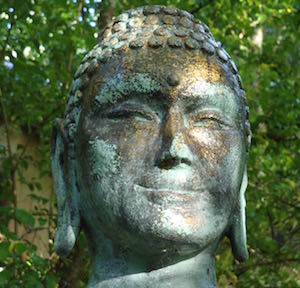 We may avoid introspection at times because we are afraid of what we’ll find. And so, unconsciously, we keep parts of our self in shadow.
We may avoid introspection at times because we are afraid of what we’ll find. And so, unconsciously, we keep parts of our self in shadow.
Although we may have found ways to wall off these parts from our conscious mind, they act, and at times even govern us, from behind the scenes. When we are befuddled by our own actions, words, or reactions, we may realize that the hidden parts of our self have taken charge of a situation. We may try to control these parts through self-discipline, but we often find that once they are triggered, reactive behavior can leak out sideways. We might try to control our reactions but that effort can tie up so much attention and energy that we can no longer act with ease. What we keep in shadow either trips us or the effort to manage it exhausts us.
We may fear that looking at our shadow material will undermine our self-esteem, or that, in any case, the material won’t change.
Fortunately, tools exist that help us not only look within, and hold what we find, but also accept it. Surprisingly self-acceptance can lead to sustainable and graceful transformation.
More than 10 years ago, I read the book Radical Acceptance by psychologist and mindfulness teacher, Tara Brach. Her suggestions reached deeply into my soul, giving me hope and a sense of encouragement that I had all but lost. Her central idea of radical self-acceptance began to extend into my darkest inner spaces. As my self-acceptance grew, the knotted internal places started to untangle. I knew I was on a path of deep self-discovery.
A few years later I was introduced to Ann Weiser Cornell’s Inner Relationship Focusing based on Eugene Gendlin’s pioneering research in psychotherapy. I heard many echoes of Tara’s message in Ann’s teaching. Ann gave me practical tools for fostering even more of the self-acceptance that Tara’s book had introduced me to.
As I continue to look into the teaching of both of Tara and Ann, I find there are several things that they both suggest, particularly when we are faced with a habit or part of ourselves that we have a hard time accepting.
Tara suggests bringing “mindfulness” to your consideration of a difficult issue or situation. Mindfulness is a state of active, open attention in the present moment. When you're mindful, you observe your thoughts and feelings from a distance, without judging them as good or bad. Mindfulness is something we can cultivate.
Ann suggests something very similar but instead of the word “mindfulness,” she uses the expression “Self in Presence.” When your Self (your larger self) is in a state of Presence, your capacity for holding a situation with curiosity and in a judgment-free stance is facilitated. Self in Presence is also something we can cultivate.
With both mindfulness and Self in Presence, we are able to keep a connection to what we are investigating without becoming merged or overshadowed by it. We stay curious and open, but from a distance.
As a next step, both Tara and Ann, each in her own way, suggest that we allow a feeling sense of our issue to arise. That feeling sense may start off vague and fuzzy, but as we continue to keep it company without judgment, it begins to come more into focus. We can begin to have a relationship with it. From Self in Presence, we invite it to share more.
As we progress in our inquiry, we might stumble across parts of our self that are angry and critical or tender and vulnerable. At this point, the suggestions of both Tara and Ann are similar. Tara suggests we offer those parts "gestures of kindness" and care. Similarly, Ann guides us to let those parts compassionately know that “I am here with you now.” During this step, both Tara and Ann tell us that parts that are hurting are often comforted by placing our own hand gently reassuringly on our body.
Going through these steps we hold with interest, compassion, and patience the tangled places inside of us. In time there is a revealing—an unknotting and unraveling of what has been in shadow. Sometimes we have to go back to sit with the same issues, reactive patterns, or stuck places more than once; but over time, as we cultivate our compassion and acceptance of what we find inside, a breath of fresh air arrives in those inner spaces. The result can be that new ways of seeing and acting in the world spontaneously open for us.
The steps I outlined above can sometimes lead us into territory that feels unfamiliar. We may be unsure about what to do next. Or maybe it feels familiar, but we feel hopeless to ever feel anything other than the feelings that first arose. I am a certified Focusing Guide trained by Ann Weiser Cornell and would be honored to assist you.
September 15, 2016
Bringing the present moment into awareness
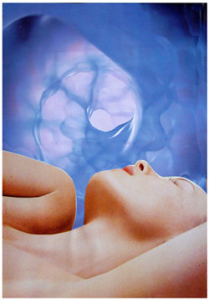 Last year I wrote about the powerful impact that the book and process called The Presence Process (Revised Edition) by Michael Brown was having on me, my husband, Jeffrey, and other Trillium Teachers. I led two groups dedicated to studying the book and going through the process. I have also supported several people who have gone through the process on their own. Michael Brown teaches his procedures thoroughly through the book, so my role was to help clarify, discuss, and encourage.
Last year I wrote about the powerful impact that the book and process called The Presence Process (Revised Edition) by Michael Brown was having on me, my husband, Jeffrey, and other Trillium Teachers. I led two groups dedicated to studying the book and going through the process. I have also supported several people who have gone through the process on their own. Michael Brown teaches his procedures thoroughly through the book, so my role was to help clarify, discuss, and encourage.
Personally, I have gone through Brown’s book and processes in a formal way three times. I continue to benefit from what I learned. For example:
- I find I am able to bring my attention to the present moment more readily. This is an on-going benefit from the Presence Process.
- When life's circumstances trigger me, I remember to pause and allow the feeling-sense of what I am experiencing to come into my awareness. Then I follow the suggestions laid out by Brown to integrate the childhood experiences that are related to the triggering. (He explains the steps for accomplishing this in detail.)
After teaching The Presence Process to two groups, I gathered testimonials. They reflected a range of experience and enthusiasm, which I will share with you here:
“During The Presence Process course, I experienced old, stagnant patterns of feeling and behavior opening to change at deep levels. Sometimes I was glad, sometimes frightened, but the experiences were valuable opportunities to grow emotionally.”
"Since working through The Presence Process with Cielle’s group this past winter, I have experienced a lingering sense of deeper, easier, sweeter, playful intimacy between the tender vulnerable child in the core of my individual self-sense and the internal adult in this child’s life, and the source of both. There has also been a clearer felt-sense of this same Source as the source, and therefore the deepest and shared identity of all beings in my environment.
For many, this book may well be revolutionary. For me it has been a compact, yet grand, summary of the best things I’ve learned about healing and growth and spiritual awakening and maturity over decades of seeking and practicing. But “summary” sells it short: it enlivens – breathes powerful life into – insights my mental-self long ago felt it had mastered and could therefore place on the shelf, no longer actually waking up each day excited to explore further.
The book feels almost like scripture, its sentences like sutras. It’s the best book of this kind I’ve read in many years, possibly ever.”
“I would encourage anyone who wants to go deeper in their awakening process to participate in this course. Hold on for the ride and enjoy the thrills of the oscillations that will occur! It is definitely a movement forward. Cielle's guidance was extremely balanced, nurturing, thoughtful, and encouraging.”
“As I read Michael Brown’s book, The Presence Process, and worked with his exercises, I felt startled by the scope of his understanding and his incomparable clarity. And at the same time I felt comforted, because the truth of his words resonated in the depth of my being. After taking this course twice, I believe I made an appreciable step forward in being able to be present to myself. I feel less tendency to vacate myself when triggered, and more ability to use his steps to integrate past trauma.”
While these testimonials came from group courses, I also offer support to individual students who wish to go through the book on their own. I would love to lend support as you encounter Brown’s insights and practice his techniques.
June 1, 2016
Wants and Needs
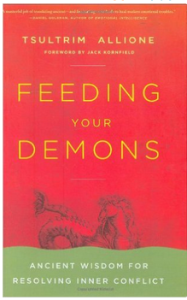 When three of my students mentioned the same book in a period of eight weeks, I took note and ordered a copy. Feeding Your Demons was written by Tsultrim Allione, an American Buddhist leader, who has distilled an eleventh-century Tibetan practice for use in today’s world. In Feeding Your Demons, Allione teaches how to overcome obstacles so that we can open to inner peace.
When three of my students mentioned the same book in a period of eight weeks, I took note and ordered a copy. Feeding Your Demons was written by Tsultrim Allione, an American Buddhist leader, who has distilled an eleventh-century Tibetan practice for use in today’s world. In Feeding Your Demons, Allione teaches how to overcome obstacles so that we can open to inner peace.
Allione’s book is an easy read and includes many examples from her life and the life of those who come to her for guidance. The five-step process she outlines is simple to follow. And, even those of us who choose not to test all the steps of the practice will find many useful methods for supporting ourselves when we are in stuck patterns, and as we unpack them.
One simple perspective offered by Allione I find myself returning to frequently. It is only a part of the more complete process, and yet I still find it very useful. Allione suggests that when we are faced with a conflict, we should look at it from two different orientations: one from the point of view of our wants and the other from the point of view of our needs. It took me a while to appreciate the difference between the two, but when I did, life became easier.
In our culture, the words “wants” and “needs” have accrued many subtle connotations, depending on the context. For example, in the study of addiction, “need” can imply a more serious level of desire for the addicted substance than “want.”
Allione uses “wants” and “needs” in a very specific sense. We could say that to Allione, our “wants” are something like “urges.” They often come up spontaneously, and if followed, could bring more difficulties.
On the other hand, needs pertain more to what we need to receive, especially on the level of feelings, in order to nourish a state of well-being. I am finding huge benefit from the simple act of setting aside time to sense into the feelings that I “need” to experience for life to feel a fundamental OK-ness.
Allione conveys her understanding through many examples, and as you read, you accrue a deeper and deeper grasp of her conclusions. I don’t wish to try to represent her five-step process here, but just share this one aspect that has made a difference for me.
I will imitate Allione and share my thoughts through an example. Suppose you have a difficult conversation with a colleague. Maybe this person is questioning your competence for a particular task that you feel very skilled at. In that moment of conflict, you do the best you can. But later that evening, you find that you are still basically all balled up inside.
Allione’s advice, at this juncture, is to consider this conflictful conversation according to our wants and our needs. If, using Allione’s definitions, our wants have to do with action, we may realize that during that conversation we wanted to walk out of the room. Or maybe we wanted to yell at the colleague, or say something harsh and blaming. We’re just digging through the feelings we had, the urges—what we wanted to do—and we allow those feelings to be there. We can even feel for the bodily sensations of those wants.
We are not trying to inspire ourselves to act on these wants in the future; we are simply holding them with curiosity and compassion.
Next, Allione suggests that we look at the conflict from the perspective of what we need. Let’s go back to the example: if we ask ourselves what we needed during that difficult conversation—needed from the most growthful perspective—we will find that the answers are much different from what we wanted. For example, we might realize that we need to be trusted, understood, and respected.
As we grasp and then feel what it is we are needing, as opposed to wanting, our bodies breathe a sigh of relief. At this point in the process Allione describes further steps to take, but I am finding that simply coming to the feeling sense of what I truly need brings a sense of rightness and ease that can initiate big shifts for me.
This process is also extremely valuable in our inner work. Maybe one part of us is in opposition to another part. We can ask both inner sides to share with us their wants and needs. It is very important not to skip over the wants. Dismissing the wants will injure that part. As we allow the wants to be felt, we make room for the needs to be uncovered. At that point, shifts happen.
Maybe we notice only small ones at first, but over time those shifts and openings will add up to substantial ones.
May 4, 2016
Tinkuy, a meeting place .. shall we dance?
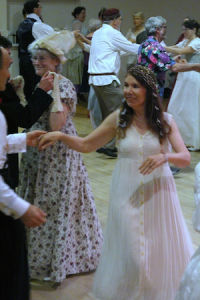 My husband, Jeffrey, and I have been to Peru more than 15 times over the past nine years. One day, while sitting with several elders who were generously sharing their wisdom with us, an important teaching came forth. I have found that I've incorporated this teaching into my daily life. So I'd like to share it with you.
My husband, Jeffrey, and I have been to Peru more than 15 times over the past nine years. One day, while sitting with several elders who were generously sharing their wisdom with us, an important teaching came forth. I have found that I've incorporated this teaching into my daily life. So I'd like to share it with you.April 6, 2016
Turning to Face the Harder Facts of Life
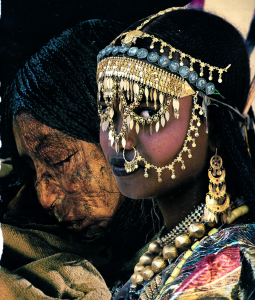 I recently attended a small intimate retreat in which the sense of shared community among the participants grew quickly. Soon even our conversations over breakfast of granola and yogurt were deeply stimulating. One morning our banter touched on the topics of death and dying, not common breakfast conversation material. That exploration stayed with me as the day progressed. In a way, you could say it haunted me.
I recently attended a small intimate retreat in which the sense of shared community among the participants grew quickly. Soon even our conversations over breakfast of granola and yogurt were deeply stimulating. One morning our banter touched on the topics of death and dying, not common breakfast conversation material. That exploration stayed with me as the day progressed. In a way, you could say it haunted me.
The work we did at the retreat opened us into enhanced states of awareness through which we effortlessly surrendered to our inherent wisdom. That wisdom was sometimes referred to as the “inner healer” because, as we opened to greater insight, we were also becoming more whole and healed. In this setting of trust and support offered by the facilitators and fellow participants, I found myself contemplating the juxtaposition of life and death. I could feel myself literally stretching in my emotional body to accept, like it or not, that death is always walking right beside life. My preference has been to ignore it, always and subtly pretending it doesn’t really exist. Yet death is always there because it is my fate and everyone else’s. My internal stretching allowed me to bring this truth into more conscious awareness.
But then I found myself thinking about other but closely related facts of life: decay, and its relative, deformity. As I explored the fact of decay, it felt like it was more connected to life than to death. By that I mean that I can accept my own death without too much angst. But the idea of decaying, bodily damage, or deformity—while I would still be trying to live my life—felt harsh, even unfair. I realized I had great fear about these possibilities. But, along with these knee jerk reactions, with the support of the workshop I was on, I felt my internal stretching making an even wider opening, making room for more of my inherent wisdom.
Perhaps I can share my experience by including a collage I made that day of two photos. One was the image of the lifeless body of a young Andean woman found in a high mountain glacier. Her body was perfectly frozen for more than 500 years. The other image was of a young modern African woman in her wedding attire. When I placed the two images so that the frozen young woman was in the background and the vital young bride overlapped it in the foreground, the bride’s face pointed away from the deceased woman, from death. The bride was in her prime, most likely anticipating that she would give birth in the coming year, creating more life. Everything about her seemed so opposite to death. Yet death eternally walked beside her at every moment, even as she looked the other way.
My thinking did not stop in this juxtaposition of life and death, but began to explore my feelings about imperfection, decay, deformity. I thought of the bride aging, advancing towards death, the bloom of youth and health stripped from her. Her perfect glowing skin reduced to wrinkles and sags. The photographer naturally chose a remarkably beautiful bride. He didn’t include one born with a cleft palette or one scarred from a fire or other human disaster. I realized that I had not only been hiding from death and dying, but also from deformity, preferring to pretend that these things don’t happen.
My in-depth exploration of these piercing facts of life once more turned into an internal stretching that actually hurt. It tore at the boundaries I’d erected to stay safe—the illusion of safety, of course—but in the end, this stretching made room for all parts of life. It liberated me.
I relaxed and breathed more fully as I recognized how much energy it took to hold my walls up—walls that had seemed impenetrable but were as flimsy as wet cardboard. Letting go of that denial allowed me to drop into a more holistic, real, and inclusive stance. I found myself able to actually welcome these incontrovertible facts into my relationship with life and with my own awareness.
One of the processes that I guide people in is called Focusing. You can experience similar insights, shifts and stretching with it. If you are ready, please call on me to help.
Do you turn away from parts of life? Would you like to stretch to accept all of life?
March 12, 2016
Awakening to Consciousness
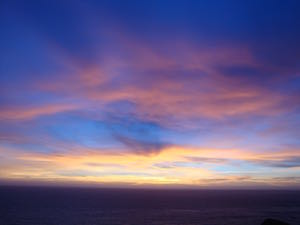 As a teacher of the Trillium path, I coach people in spiritual awakening using a process that explores three key components:
As a teacher of the Trillium path, I coach people in spiritual awakening using a process that explores three key components:
- consciousness
- embodiment
- and mutuality
All three of these components deserve nuanced understanding, but today I will focus on consciousness. First I must acknowledge that consciousness is ineffable. And yet we find that talking around it, pointing at it, stirs our sense of it. If you want to explore more thorough dialog and exercises, I invite you to set up a time for a private session with me.
Consciousness
The awakening promised through the Trillium path requires the student to have the direct experience of pure consciousness, the field that underlies all creation. Pure consciousness is the unmanifest source of all manifestation. It is eternal and infinite, and contains both silence and dynamism. Paradoxically it is both transcendent and immanently pervades all of creation.
Consciousness is not only the source of all manifestation, but all manifestation is shot through with consciousness. Since it is infinite, consciousness exists in every particle of our bodies, minds, nature, in fact, the whole universe.
The great gift of being human is that we that can awaken consciousness. Some spiritual paths call this awakening to conscious the discovery of “Awake Awareness.”
Consciousness is that which is always awake in us, though our process of becoming awake to it is a journey. How can that be? Because we are accustomed to living in our minds and senses. One way we come to experience our own consciousness is to recognize that it is that which notices everything happening in, to, and around us. We may have the impression that our mind is the noticer, but consciousness also notices the mind. Consciousness notices all, but remains untouched and unbounded by what it registers.
Pure consciousness can be directly experienced, and this experience will be particular to each person. For many, this direct experience comes initially as a "witness consciousness". For most, however, when this direct experience is accompanied by an understanding of what is being experienced, a shift in personal identity occurs. Over time this shift stabilizes into a new sense of self. We no longer identify exclusively with the mind, body, and emotions; we come to know ourselves as the larger spaciousness that comprises all creation.
The embodied awakening of the Trillium path provides a further development. After awakening to consciousness, the next stage is to awaken to “conscious embodiment.” This is when our feeling nature awakens, allowing the vastness and the permanence of consciousness to affect our daily experience. At this stage, we could say that our awareness begins to feel our oneness with all things. As this sense settles into our lives, our sense of unity stabilizes into an awareness that is often subtle but always there.
This awakening to our conscious nature may sound difficult or foreign, but consciousness is the most intimate part of us. We are never separate from our eternal nature, even when we are not yet awake to it.
Finding your conscious nature—awakening to your true nature as consciousness—is probably easier than you think. I can help you discover your conscious nature, grow into it, and stabilize a new relationship with yourself and the world.
February 13, 2016
The value of non-judgmental listening in aiding transformation
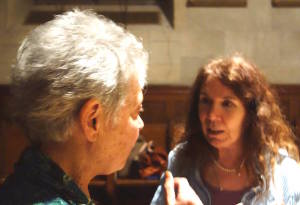 People who are new to Trillium work sometimes ask, “Why is mutuality a part of this work? And how does that take place?” Mutuality shows up in various ways, but perhaps most important among them is listening and being listened to. We practice “whole body listening,” which simply means we bring as much of our attention to the speaker as we can but without judgment or the intention to “fix.” We often find that being truly listened to results in our experiencing effortless transformations and unfolding.
People who are new to Trillium work sometimes ask, “Why is mutuality a part of this work? And how does that take place?” Mutuality shows up in various ways, but perhaps most important among them is listening and being listened to. We practice “whole body listening,” which simply means we bring as much of our attention to the speaker as we can but without judgment or the intention to “fix.” We often find that being truly listened to results in our experiencing effortless transformations and unfolding.
Whole body listening offers more safety, and allows the speaker the autonomy to find her own answers and truth. The listener does not vacate herself, but keeps some attention within, tracking her own reactions to the words spoken.
Recently, I participated in an exercise that brought to light the value of compassionate listening and energetic holding of another. I was at a workshop with participants from 13 countries. We were placed in pairs that consisted of one person whose native language was English and the other person whose native language was other than English. We took turns being the speaker and listener, with an exchange lasting about ten minutes. The speaker spoke in her native language.
Yes, that meant that the listener did not always understand all or much of what the speaker said!
First, the speaker took a moment to consider a challenging issue in her life. Then she spoke of that concern in just a few sentences.
Next the speaker paused and turned her attention within to find a bodily sense of the issue, and then spoke that out. For example, she might say, “I feel a knot in my stomach.” Or, “There’s a tightness in my throat.” Whether the listener understood even a word of what she heard, she kept her attention right there, deeply taking in the speaker.
When the speaker finished sharing her felt sense of her issue, the listener then compassionately reflected back a word or two in the speaker’s language. Of course, the pronunciation of the word might not match, and perhaps if several words had been spoken, only one or two were reflected back.
Surprisingly the impact of being heard was still quite apparent and moving to the speaker. In fact, many people were touched so deeply by the reflection they received that tears flowed. It didn’t even matter if the listener honed in on the “most important” word. It seemed that any word spoken out enabled the speaker to feel heard and to take her own word back inside. She could then explore the resonance that reflected word had with her issue.
When it was my turn to speak, I shared that an important concern for me was staying in connection with my family. My parents have both passed away, and my brothers and sisters live 2000 miles away. On top of that, two of my three children live hundreds of miles away. I miss them all. The San Salvadoran woman I was partnered with was able to reflect back to me the word “connection.” I took that word back inside and was able to make even deeper reflections on how important connecting to family is for me. As I took this in at a deeper level, it was as if I was listening to myself at a deeper level. Things started to shift. I felt an opening and expansion. The tightness in my throat started to relax.
After the exercise, many in the group said that one of the reasons this exercise was so effective for the speakers was that they knew the listener would not judge or interpret the speaker’s words. After all, how could they when they had not understood what was said. The listener was simply there, attentive, compassionate. The speakers felt safer and more accepted than they usually did when talking about a deeply personal issue. This sense of safety allowed them to sit with their issue and even dive into it more deeply.
The power of listening without judging or fixing—skills that are always at our disposal—shows us that we rarely need to offer interpretation or advise in order to help someone. Compassionate listening and simple reflection allow a speaker to stay in her process and discover what the innate wisdom of her body/spirit wants her to know.
Being listened to without judgment helps us relax more and more into our humanness, which paradoxically allows more room for our Being nature to be consciously experienced.
January 25, 2016
Trying on our new name
 Toward the end of 2015, the spiritual group I work with changed its name from “Waking Down in Mutuality®” to “Trillium Awakening.” I am watching how I feel about this change, how I am settling into it.
Toward the end of 2015, the spiritual group I work with changed its name from “Waking Down in Mutuality®” to “Trillium Awakening.” I am watching how I feel about this change, how I am settling into it.
I never really liked the name “Waking Down,” but it was familiar. Although I became a mentor in the work 10 years ago and then moved on to be a teacher, I always found it was a conversation stopper to say “I am a Waking Down teacher.” The person I was talking to would look at me with a “Huh?” expression. Finally, this past year, I discovered I could say something like, “I am a spiritual counselor and I teach a process and path called ‘Waking Down.’” That put the name into a context people could understand, and they were more likely to ask for more information than to just change the subject.
Over the years, the words “Waking Down” became like an old comfy sweater that I could wear to stay warm. This sweater formed to the shape of who I am and that worked.
But now, when I reach for that sweater, it feels like it has turned into water, and as I try to put it on, the sweater drips off of me. It is gone, but not quite. My arms keep reaching for the sleeves, but where are they? That feels odd... a sense of loss. I am not yet used to the new name, “Trillium Awakening.” I see it sitting, still folded in the box. I take it out, hold it up, and look at it. It looks new and fresh, but not yet familiar. I’m wondering if it will fit me.
Today I was working with a student via Skype. He is close to the birth of his embodied awakening. He explored in a profound way his connection with consciousness—that fundamental awareness that supports, infuses, and comprises all of the manifest world. I found myself silently, inwardly calling to the spirit of the Trillium flower: I called her by one of her names, “Oh Birthroot, come. Bring to my dear student the birth of his awakening to his true nature." And then another name of this flower sprang into my mind, “Wake Robin, harbinger of spring, spring forth wakeful awareness that he may see and hold his divinely human nature that has been lying dormant ... as a bulb in winter.”
And so, for the first time, I put the new sweater on. I think it will fit.
Dec 8, 2015
Letting Go of Idealizations
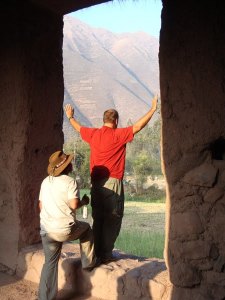 Sometimes life seems to be a journey from holding many idealized beliefs to gradually replacing them with more realistic views. But the transition is not always easy because these idealized expectations have given us a way to interpret the past and future, and a sense of hope and predictability.
Sometimes life seems to be a journey from holding many idealized beliefs to gradually replacing them with more realistic views. But the transition is not always easy because these idealized expectations have given us a way to interpret the past and future, and a sense of hope and predictability.
There would be nothing wrong with idealized expectations, if only they were true. But the world is more complex than these simplified constructs. As many gurus have said, “There is no perfection in the relative world.”
One example of an idealized expectation that many spiritual people hold is the belief that “awakening” or “enlightenment” will bring perfect equanimity. They believe that when they reach that “point,” they will no longer be bothered by challenging events—such as a divorce, a death in the family, or even just losing their car keys at a mall. The sad thing is that when those holding this idealized view do get upset, they may use this experience as a measure of their awakening, and find themselves falling short.
As long as we are in human bodies, we will continue to have emotions, moods, health challenges, ups and downs. Yes, some may achieve greater equanimity than they had at the outset, but still be far from “perfect” in their behavior.
Stumbling into the wall of actuality usually forces us to dismantle one or more idealized expectations. But the period of dismantling can feel unstable and shaky. A part of us may fight to hold onto our idealizations, even though we see that they don’t match our unique inner makeup or the world around us. This part of us may insist, “Surely those beliefs are correct. I’m just not doing the right things.” For a time we might try even harder to rise to our idealized goals.
In the early stages of reaction, we may ask ourselves, with some angst, “What will motivate me now, what will give me hope and direction?” Or, “Without these beliefs, how can I keep from becoming cynical?”
Sometimes that inner struggle is hard to identify because it may show up as depression, resistance, bitterness, or rebellion. We may go through phases of grief, such as denial, anger, bargaining, and blame.
How do we move through deep disappointment? I have found that the steps are not complicated though they can be difficult. The first step is to set aside time to allow the innate ability of our bodies to feel the very confusion that we think we don’t want to feel.
We might first encounter a part of us that is resisting all feeling in order to push aside the feelings of confusion and despair. If that is the case, then we will need to pause and allow those feelings of resistance to be there. Blocking is an emotion and our body can hold it, too. As uncomfortable as the fear and discomfort are, being with these and other feelings is the fastest way to resolution.
In this process, we discover that we can stay with the sense of shakiness, confusion, and turmoil without merging with it. This may seem counter-intuitive, but what we experience is that a larger sense of ourselves can hold these emotions.
Often this investigation is hard to do on our own. I am happy to spend time with you to offer support. In time, you will create a new and healthier orientation that is uniquely attuned to what is right for you. The energy that was used to hold onto idealizations will become free to expand into more realistic assessments and new foundations for hope.
The resolution we find will usually be one we have not previously considered. It will arise freshly, maybe even as small steps unfolding at unexpected moments. Being with the unstable and shaky places gives rise to new stability, and we become free of the deep disappointments and self-criticism that our idealizations brought.
In this way we grow into our unique, beautiful, and relaxed self-expression and towards increasing freedom and wholeness.
11/13/15
Embracing our Humanness
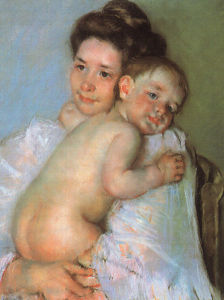 Whole Being Awakening is an awakening to our totality. In this context, some may think "totality" is synonymous with the absolute or the unmanifest. They may say that manifest reality is maya—an illusion. But that angle seems to undercut what we experience every day of our lives—the human condition and tactile world.
Whole Being Awakening is an awakening to our totality. In this context, some may think "totality" is synonymous with the absolute or the unmanifest. They may say that manifest reality is maya—an illusion. But that angle seems to undercut what we experience every day of our lives—the human condition and tactile world.
Totality is simply everything, the entire range, whether manifest or unmanifest. As we awaken, we come to know the paradox of our being simultaneously finite and infinite—human, with all our frailties and limitations, and the eternal, unified field of consciousness that upholds and underlies all creation.
And so it follows that awakening to our totality involves embracing all parts of ourselves. If embracing feels like too much of a stretch, then accepting.
But does that really mean embracing the small, petty parts? The clumsy, confused, even dark parts? When we discount or shun any part, we block or slow down our whole being awakening.
On our path to full awakening, we might ponder if we are growing in our capacity to tenderly accept and hold even the parts of ourselves that we feel shame about. We support our awakening to totality by embracing what appears weak or discordant in ourselves and the world.
The poetry of Hafiz, the 14th century Persian mystic, often touches me deeply and informs me as I walk the path of awakening. He wrote:
Know the nature of your Beloved.
In His loving eyes, our every thought, word
and movement is always, always beautiful.
Yes, our every thought, word, and movement is always beautiful. Can we sit beside our larger Self that is just a hair’s breadth away from the Beloved--that awakened Self that knows itself as consciousness?
Breathe in the unconditional love of the Beloved. Can we fill with so much love that we can extend that love unconditionally to each part of ourselves? Awakening is not preferential; it is all-encompassing.
10/24/15
Onliness
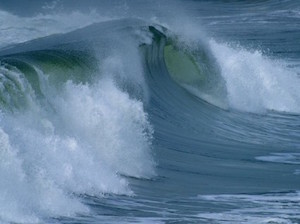 “Onlyness” is a word coined by Saniel Bonder, the founder of Waking Down in Mutuality who has been assisting people in the process of awakening for many years. He uses this word to help people get a handle on a basic truth regarding consciousness—that unbounded, eternal, unified field that underlies all of creation. This unified field is also imminently part of all manifest creation. In fact, the entire manifest creation is nothing other than consciousness.
“Onlyness” is a word coined by Saniel Bonder, the founder of Waking Down in Mutuality who has been assisting people in the process of awakening for many years. He uses this word to help people get a handle on a basic truth regarding consciousness—that unbounded, eternal, unified field that underlies all of creation. This unified field is also imminently part of all manifest creation. In fact, the entire manifest creation is nothing other than consciousness.
CC Leigh, a Trillium Awakening teacher says, “Consciousness, once awakened, becomes self-aware and realizes its existential nature as the same essential nature of all that is, including the body/mind.” It realizes Onlyness.
In a future blog post, I will write more about why the realization of Onlyness is an essential process in embodied awakening. But for now, I want to share an ancient teaching to help you understand the “allness” of Onlyness. This story uses the ocean and its waves as an analogy.
The still depths of the ocean suggest the silence within us, the silence of our infinite nature. The still depths rise up into individual waves, but these waves are made up of nothing other than ocean. Waves are discrete expressions of the ocean, which is itself undifferentiated. And each distinct wave is seamlessly connected to all other waves.
As we become more and more awake to our true nature, we become increasingly aware that while we are each distinct and unique, we are in essence the eternal and silent unified field of consciousness. As such we are not actually separate. Each wave is essentially, in its true nature, nothing other than the ocean. Just as each wave in the ocean is distinct yet connected to the other waves, we increasingly feel on a deep level of realization that all of us, and indeed everything in creation, is comprised of consciousness, the spacious, unmanifest field of Being. All is one in essence. Onlyness.
9/8/15
Allowing All Our Parts to be Present, Even the Inner Critic
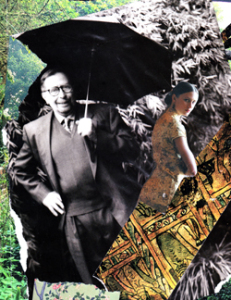 In our progress to whole being awakening, we see that we can’t be truly awake if we cut off any part of us that is arising. We invite all parts of ourselves to be present.
In our progress to whole being awakening, we see that we can’t be truly awake if we cut off any part of us that is arising. We invite all parts of ourselves to be present.
One of our parts that can be difficult to allow is our inner critic. Perhaps it feels like a constant voice in the background that criticizes what we do or who we are. How can we invite this inner critic to be present when at times it may feel like our enemy?
But, if we go to war with our inner critic or blame ourselves for judging, all we do is add another layer of hurt and non-acceptance to the heart. Allowing all parts to be present frees up energy from those parts that have been ostracized or cramped.
When a child is having a tantrum, it can sometimes be the best strategy for the mother to stop and really listen to the child. If the child believes it has the sincerely interested ear of the parent, it may settle down and say what is truly bothering it. This is also true with the sometimes strident voice of our inner critic. If we stop and listen to it in non-judgment, we may find out a lot more about what it is trying to communicate.
This exercise, adapted from Ann Weiser Cornell’s Focusing, can be used to listen to any of our parts, but in this case, let’s give the inner critic a chance to speak its deeper feelings and purpose:
If you can, sit with your eyes closed. Start with pausing. Then drop into what is going on inside, bringing innocent, non-judging curiosity to whatever you notice. It is often easiest to first pay attention to physical sensations and simply describe them to ourselves. For example, you may notice that the inner critic feels heavy, sharp, constricted, or jumpy. Keep those sensations company without judging them. Then gently inquire if the inner critic would like to share how it feels or how it views the world. Perhaps the inner critic wants to rant. Continue to listen with non-judgment.
After a few minutes, you might find that your inner critic is sharing other, deeper feelings. Maybe it feels vulnerable, or hurt. Maybe the inner judge believes it needs to keep you on your toes so that you won’t fail or be criticized by the outside world.
We see that our parts are not about logic, but stored emotions taken on at earlier times in our lives. By bringing compassionate listening to all of our parts, we learn that they actually want to help us survive. And, in the process, we expand our capacity to hold them.
Will the inner critic ever change or become silent? We hold all of our parts without any expectation that they will change. At the same time we know that change is inevitable....that change is the nature of life. We can't predict what that change will be, but we allow the transformative power of our attention to integrate and bring forth greater wholeness.
July 31, 2015
Trillium Awakening Nests
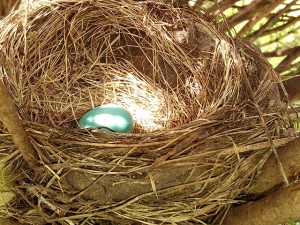 Providing a Nest or Nesting Session for a person at a difficult time in his or her life is a highly regarded process in the Trillium Awakening work. A Nest is a safe haven for anyone who feels especially stuck or vulnerable.
Providing a Nest or Nesting Session for a person at a difficult time in his or her life is a highly regarded process in the Trillium Awakening work. A Nest is a safe haven for anyone who feels especially stuck or vulnerable.
What kinds of issues qualify for a Nest? Any kind. Perhaps someone is paralyzed between moving in with a partner and keeping his own living quarters. Or a person getting a divorce cannot seem to pull up out of grief. Maybe a woman new to town is devastatingly lonely but embarrassed to talk about it.
A Nest is a session in which the person needing extra support is compassionately attended to by other Trillium Awakening participants in a gentle and caring manner. Nests are special because they typically give the nestee a full hour of whole body listening from the people giving support. That support is magnified by group consciousness, somewhat particular to the activation and work of Trillium Awakening. (Truth is, one rarely finds the quality of listening elsewhere that is honed by many participants in this work. )
One of the wonderful aspects of a Nest is that the nestee controls the environment and interaction during his Nest. He explains if he would like to talk or be silent; lie down or sit; be touched, and if so, just how; have music; receive verbal encouragement; and other specifics. In our experience, the nestee often wishes to lie down during the Nest while the “nesters” gather around. We make sure that there are padding, blankets and pillows available for everyone’s comfort. We recommend that nestees consider touch as a possibility. Even just hands on the soles of the feet and the cranium can soothe and also facilitate a deeper experience. Often when a person experiences safe touch with no agenda, he will open to receiving more touch. Those providing the Nest will proceed according to the wishes and pace of the person in need.
One of the most supportive aspects of the Nest is that the nesters do not provide any advice or any attempt to “fix” the nestee’s issues. And, as with any Trillium Awakening event, the group agrees to complete confidentiality, at that time and forever. They also agree not to bring up the nestee’s issues to him at any time. Creating a safe space is of paramount importance to the effectiveness of the Nest.
I recently read these words about rest, (not nests), from poet and author David Whyte. Though Whyte was talking about rest, I found his words to be so appropro to how and why a Nest works:
“In the first stage of rest is the sense of stopping, of giving up on what we have been doing or how we have been being. In the second stage is the sense of slowly coming home, the physical journey into the body’s un-coerced and un-bullied self, as if trying to remember the way or even the destination itself. In the third state is a sense of healing. self-forgiveness, and arrival.”
What a beautiful expression. Nests, like rest, give us the chance to come home to our “un-coerced” and “un-bullied self.” And we could say, also come home to our self that is more accepting of what is and more able to slip around the internal knots to find new options within the mystery.
No matter what the nestee’s subjective experience during the Nest, nestees often report in the coming weeks that they have found new insights, a new strategy, or more hope and ease.
June 12, 2015
On The Presence Process
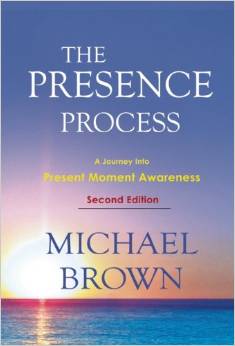 I highly recommend the book, The Presence Process, second edition, by Michael Brown. Last year, my husband, Jeffrey, and I, and several other Trillium Awakening teachers read The Presence Process and recognized that the knowledge and procedures taught in this book were deepening our awakening and simultaneously improving our daily lives.
I highly recommend the book, The Presence Process, second edition, by Michael Brown. Last year, my husband, Jeffrey, and I, and several other Trillium Awakening teachers read The Presence Process and recognized that the knowledge and procedures taught in this book were deepening our awakening and simultaneously improving our daily lives.
Basically The Presence Process teaches you techniques for being present. These are not small bits or stale affirmations, but deep insights and processes for adding to your ability to be present. The knowledge Brown shares is by itself, well, seismic to me. In fact, Brown himself says that one can get a huge amount just from reading the book. But an equally important part of the process is the breathing exercises, which when you practice once or twice daily, add a powerful engine for freeing up attention for presence.
What does being present mean? In brief, we could say that being present means feeling everything that comes up. Most of us are not already experts at this. We all have undigested material from our pasts that we hope has become integrated or has dropped away, but we find that it can come out sideways. We may sometimes find ourselves wondering, “Why did we say that?” “Why did we react to that person or event negatively?” “Why did we have a strong bias to choose X when we thought Y was actually better for us?”
In the winter of 2015, I “taught” a book course on The Presence Process. I use quotes around “taught” because Michael Brown gives you all the knowledge and procedures for this process in his book. So my role was to help clarify Brown’s instruction when participants were confused, and to support their process, which sometimes felt challenging to them.
Learning to be present brings us more viscerally to old material still residing in us. So reading the book and following its exercises can bring up emotions we haven’t been fully allowing. For some students, this process can feel rocky at times. If you decide to read The Presence Process and would like help along the way, please contact me.
In a future post, I’ll share more personal responses to Michael Brown’s Presence Process, both mine and those of some of the participants on the book course I led.

